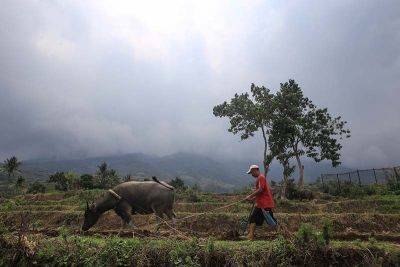Kanlaon Volcano logs 64 volcanic-tectonic earthquakes on October 31
MANILA, Philippines — Kanlaon Volcano experienced 64 volcanic-tectonic earthquakes on Thursday, October 31, within the span of nine hours starting at midnight.
In a 10:30 a.m. advisory, state seismologists at Phivolcs warned of a significant increase in seismic activity at the volcano, maintaining Alert Level 2 or increasing unrest.
The agency added that the current seismic activity “may lead to eruptive unrest and an increase in the Alert Level.”
On Wednesday, October 30, the volcano recorded six volcanic earthquakes, down from 20 on Tuesday, October 29.
This number tripled as earthquakes at Kanlaon Volcano surged to 64 on Thursday morning alone, with local magnitudes ranging from ML0.9 to ML2.9, occurring at depths of 2 to 8 kilometers beneath the western flanks of the volcanic edifice.
The observation station at Sto. Bama, Ara-al, La Carlota City detected this seismic activity, with volcanic-tectonic earthquakes represented by orange dots in its seismic records.
Seismic record of the Sto. Bama, Ara-al, La Carlota City observation station (VKSB) on 31 October 2024 showing volcano-tectonic (VT) earthquakes marked by orange dots. pic.twitter.com/1svnIRL1cc
What are volcanic-tectonic earthquakes? However, these earthquakes are not ordinary volcanic events, as defined by Phivolcs. Volcanic earthquakes are described as “generated by magma-related processes beneath or near an active volcano.”
Nor are they merely tectonic earthquakes, which the agency defines as “produced by faulting.”
Instead, they represent a combination of both. Phivolcs explained in the advisory that volcanic-tectonic earthquakes result from “rock fracturing processes” along faults near the volcano.
According to the Ethiopian Disaster Risk Management Commission, a volcano’s magmatic system does not directly cause volcanic-tectonic earthquakes. Rather, these earthquakes arise from strain exerted in areas with weak faults.
Sulfur dioxide flux. Phivolcs reported that Kanlaon Volcano's sulfur dioxide emissions have intensified in 2024, averaging 4,234 tonnes per day following its eruption on June 3.
Prior to the eruption, the sulfur dioxide emission rate was just 1,273 tonnes per day, which is less







